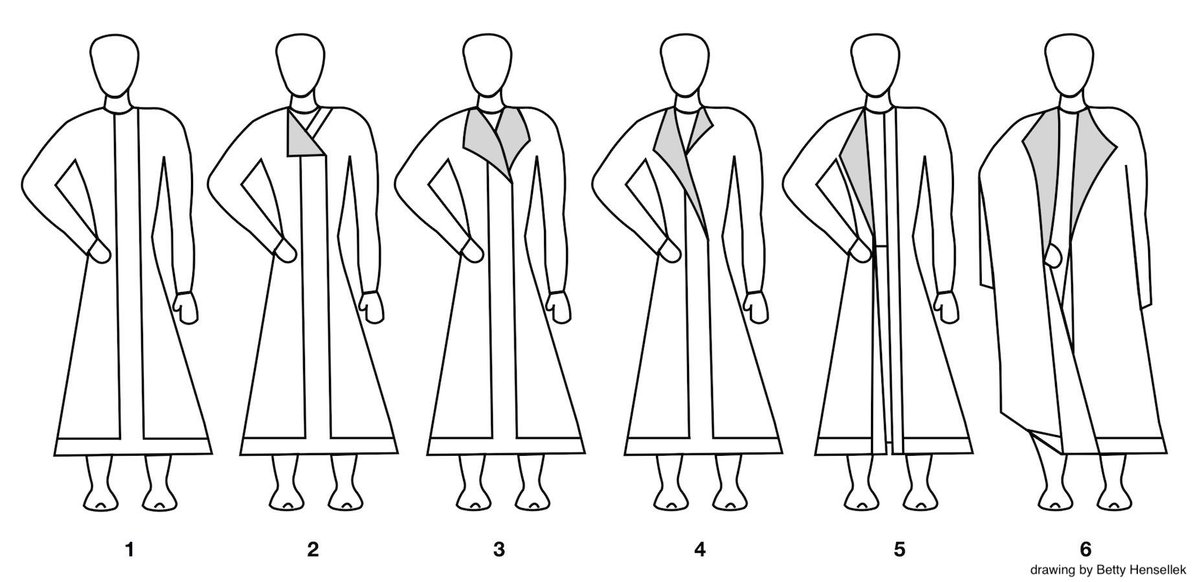1/5
Why did diverse members of diverse communities across Central Eurasia all wear a kaftan? The kaftan’s unique combination of design features provided a sartorial language that could articulate mutable social distinctions across cultures and for various social occasions
BH
Why did diverse members of diverse communities across Central Eurasia all wear a kaftan? The kaftan’s unique combination of design features provided a sartorial language that could articulate mutable social distinctions across cultures and for various social occasions
BH
2/5
Not only could personalizations be sewn into a kaftan at the time of its construction (e.g. fabric or trim placement), but the lapeled front panels were highly significant, allowing for the kaftan to be worn & styled in a variety of ways
BH
Not only could personalizations be sewn into a kaftan at the time of its construction (e.g. fabric or trim placement), but the lapeled front panels were highly significant, allowing for the kaftan to be worn & styled in a variety of ways
BH
3/5
In some settings the styling of the kaftan’s lapels reinforced other indicators of social hierarchy, which happened e.g. at the Sogdian formal banquet (I’ll discuss my article about this occasion tomorrow!); at other occasions it permitted contradictions
BH
In some settings the styling of the kaftan’s lapels reinforced other indicators of social hierarchy, which happened e.g. at the Sogdian formal banquet (I’ll discuss my article about this occasion tomorrow!); at other occasions it permitted contradictions
BH
4/5
This styling and re-styling of the lapels meant that social hierarchies were not strict, but flexible. Kaftan wearers could change and express their status according to the given social situation
BH
This styling and re-styling of the lapels meant that social hierarchies were not strict, but flexible. Kaftan wearers could change and express their status according to the given social situation
BH
5/5
This unprecedented fashion system meant that locals and foreigners alike could easily navigate the polycentric political landscape of Central Eurasia in the 2nd half of the 1st mil. CE
BH
This unprecedented fashion system meant that locals and foreigners alike could easily navigate the polycentric political landscape of Central Eurasia in the 2nd half of the 1st mil. CE
BH

 Read on Twitter
Read on Twitter



